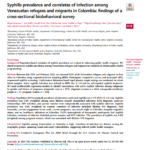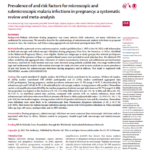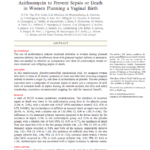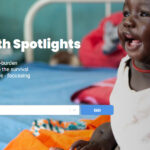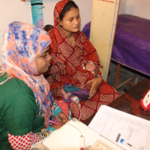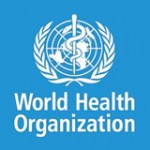Severe newborn infections—including sepsis, meningitis, and pneumonia—are a major cause of morbidity and mortality among newborns in low- and middle-income countries.
Recent analyses estimate that globally, approximately 400,000 newborns die each year as a result of severe infections, over one-sixth of the total burden of newborn deaths. Most of these deaths could be averted through:
- preventive measures, such as improving hygiene practices, and
- timely and appropriate care for sick newborns.
17
percentage of neonatal deaths caused by severe bacterial infections
400k
number of newborns who die each year as a result of severe infections
8
percentage of neonatal deaths caused by pneumonia
All data on this page represents the most recent data available, unless otherwise noted. Please visit our Newborn Numbers page and download the Excel spreadsheet to explore the data further.
Prevention
Preventive measures during the antenatal and intrapartum periods can reduce the risk of congenital and newborn infections while protecting the health of the mother. Before and during pregnancy, women can be screened and treated for syphilis and vaccinated against diseases like tetanus. In addition to preventing subsequent infection in the newborn, treating maternal infections during pregnancy – such as antibiotics for prolonged, preterm rupture of membranes or chorioamnionitis — can also greatly reduce the risk for preterm birth, a leading cause of newborn mortality as well as prevent serious newborn infection.
Clean birth practices reduce the rate of newborn infections at home and implementation of consistent, high-quality infection control practices reduces newborn infections in facility settings. Hygienic umbilical cord care, including using a sterile instrument to cut the cord and, when appropriate and per national guidelines, applying chlorhexidine to the newborn cord stump, can also reduce infection and preventable death. Early and exclusive breastfeeding also reduces the likelihood of newborn infections in several ways, including providing critical support to boost immune system development and avoiding the introduction of potentially harmful substances to the immature gut.
Management
WHO recommends that newborns and young infants should be hospitalized when they have signs of possible serious bacterial infection, and treated with 7 days of a combination of injectable antibiotics – gentaminin and ampicillin (or penicillin). In many or most low and middle-income countries (LMICs), such hospital-based treatment is not routinely feasible for many families for a number of cultural, geographic, and financial barriers. In these circumstances, recent evidence has led WHO to recommend outpatient antibiotics to such newborns and young infants to successfully treat the illness. The recommended antibiotic course is a combination of injectable and oral antibiotics: 2 days of once-daily gentamicin combined with 7 days of twice-daily oral amoxicillin. A follow up visit at 4 days of treatment is recommended to ensure adherence to the antibiotics and to ensure improvement in the newborn’s condition. When referral from outpatient facility to hospital is accepted by families, the health center provider should ensure that the newborn or young infant is first given a dose of gentamicin and amoxicillin since even short delays in initiation of treatment can mean the difference between life and death.
Saving newborn lives from life-threatening infections is now indeed feasible, acceptable, and effective in reducing preventable newborn and young infant deaths, and should be a top public health priority.
Key Resources:
- Respiratory Distress in the Newborn
- Safe and effective oxygen use for inpatient care of newborns
- Safe and effective infection prevention for inpatient newborn care
- Management of newborn infections during inpatient care
- Neonatal severe bacterial infection impairment estimates in South Asia, sub-Saharan Africa, and Latin America for 2010
